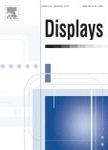版权所有:内蒙古大学图书馆 技术提供:维普资讯• 智图
内蒙古自治区呼和浩特市赛罕区大学西街235号 邮编: 010021

作者机构:Chongqing Univ State Key Lab Mech Transmiss Adv Equipment Chongqing 400030 Peoples R China Univ Brighton Sch Comp Engn & Math Brighton BN2 4GJ England
出 版 物:《DISPLAYS》 (Disp)
年 卷 期:2025年第87卷
核心收录:
学科分类:0808[工学-电气工程] 08[工学] 0804[工学-仪器科学与技术] 0702[理学-物理学] 0812[工学-计算机科学与技术(可授工学、理学学位)]
基 金:National Natural Science Foundation of China [52175453 52375481]
主 题:Specular removal Highlight Dark channel Machine vision Image restoration
摘 要:The specular reflection of objects is an important factor affecting image display quality, which poses challenges to tasks such as pattern recognition and machine vision detection. At present, specular removal for a single real image is a crucial pre-processing step to improve the performance of computer vision algorithms. Despite notable approaches tailored for handling synthesized and pre-simplified images with dark backgrounds, real-time separation of specular reflection for a single real image remains a challenging problem. This paper proposes a novel specular removal method to separate the specular reflection for a single real image accurately and efficiently based on the dark channel prior. Initially, a modified-specular-free (MSF) image is developed using the dark channel prior, which can derive a direct estimation of specular reflection. Next, the image chromaticity spaces are established to represent the pixel intensity. Then, the maximum chromaticity value of the modified MSF image is extracted to guide the filtering of the specular reflection, treating the specular pixels as noise in the chromaticity space. Finally, the image without specular reflection can be obtained using the restored maximum chromaticity value based on the dichromatic reflection model. The superiority of this method is to achieve highquality specular reflection separation quickly without destroying the geometric features of the real image. Compared with the state-of-the-art methods, experimental results show that the proposed algorithm can achieve the best subjective visual effect and satisfactory quantitative performance. In addition, this approach can be implemented efficiently to meet real-time requirements, promising to be applied to computer vision measurement and inspection applications.